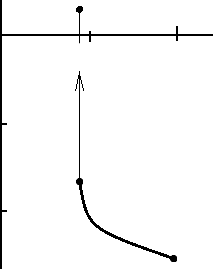Application of the maximum principle for the circuits optimization
DOI:
https://doi.org/10.3103/S073527271706005XKeywords:
analog circuits, generalized optimization methodology, Pontryagin maximum principleAbstract
The solution of the problem of computational time reduce during optimization of electronic circuits allows to enhance the development quality. Generalized methodology of the circuits optimization developed before on a basis of optimal control allows to define many different optimization strategies. Definition of Lyapunov’s function of optimization process and its analysis for different strategies allows to compare these strategies from viewpoint of computational burden and select the best of them. At the same time the most grounded approach for the search of optimal development strategy in this statement is Pontryagin maximum principle. But application of this principle for solution of non-linear problems is related to essential complications. In this paper it is obtained the solution of electronic circuit optimization problem during minimal amount possible processor time on a basis of Pontryagin maximum principle in general case of Nvariables. It is shown that effect studied before for acceleration of the process of optimization coincides the solution on a basis of the maximum principle. This fact is the theoretical explanation of the acceleration effect. From the other hand the principle of maximum can be the basis for development of the algorithm for electronic circuits optimization with minimal processor time cost.References
- GEORGE, A. On block elimination for sparse linear systems. SIAM J. Numer. Anal., v.11, n.3, p.585-603, 1984. DOI: http://dx.doi.org/10.1137/0711050.
- RUEHLI, A.; SANGIOVANNI-VINCENTELLI, A.; RABBAT, G. Time analysis of large-scale circuits containing one-way macromodels. IEEE Trans. Circuits Syst., v.29, n.3, p.185-190, 1982. DOI: https://doi.org/10.1109/TCS.1982.1085127.
- STEHR, G.; PRONATH, M.; SCHENKEL, F.; GRAEB, H.; ANTREICH, K. Initial sizing of analog integrated circuits by centering within topology-given implicit specifications. Proc. of Int. Conf. on Computer Aided Design, 9-13 Nov. 2003, San Jose, CA, USA. IEEE, 2003, p.241-246. DOI: https://doi.org/10.1109/ICCAD.2003.159696.
- OJHA, A.K.; OTA, R.R. Multi-objective geometric programming problems with cost coefficients as multiple parameters. Advanced Modelling and Optimization, v.15, n.3, p.815-838, 2013, https://camo.ici.ro/journal/vol15/v15c18.pdf.
- CERVANTES-GONZALEZ, J.C.; RAYAS-SANCHEZ, J.E.; LOPEZ, C.A.; CAMACHO-PEREZ, J.R.; BRITO-BRITO, Z.; CHAVEZ-HURTADO, J.L. Space mapping optimization of handset antennas considering EM effects of mobile phone components and human body. Int. J. RF Microwave Computer-Aided Engineering, v.26, n.2, p.121-128, 2016. DOI: http://doi.org/10.1002/mmce.20945.
- RIDZUAN, M.R.M.; HASSAN, E.E.; ABDULLAH, A.R.; BAHAMAN, N.; KADIR, A.F.A. A new meta heuristic evolutionary programming (NMEP) in optimizing economic energy dispatch. J. Telecommunication Electronic and Computer Engineering, v.8, n.2, p.35-40, 2016, http://doi.org/10.1002/mmce.20945.
- YENGUI, F.; LABRAK, L.; FRANTZ, F.; DAVIOT, R.; ABOUCHI, N.; O’CONNOR, I. A hybrid GA-SQP algorithm for analog circuits sizing. Circuits and Systems, v.3, n.2, p.146-152, 2012. DOI: http://dx.doi.org/10.4236/cs.2012.32019.
- COHEN, M.W.; AGA, M.; WEINBERG, T. Genetic algorithm software system for analog circuit design. Procedia CIRP, v.36, p.17-22, 2015. DOI: https://doi.org/10.1016/j.procir.2015.01.033.
- FARAGO, P.; CSIPKES, G.; CSIPKES, D.; FARAGO, C.; HINTEA, S. An FPAA approach to adaptive filter design with evolutionary software-driven reconfiguration. Electronika ir Electrotechnika, v.20, n.5, p.89-96, 2014. DOI: http://dx.doi.org/10.5755/j01.eee.20.5.5579.
- SRIVASTAVA, A.; KACHRU, T.; SYLVESTER, D. Low-power-design space exploration considering process variation using robust optimization. IEEE Trans. Computer-Aided Design of Integrated Circuits and Systems, v.26, n.1, p.67-79, 2007. DOI: https://doi.org/10.1109/TCAD.2006.882491.
- BOSMAN, P.A.N. On gradients and hybrid evolutionary algorithms for real-valued multiobjective optimization. IEEE Trans. Evolutionary Computation, v.16, n.1, p.51-69, 2012. DOI: https://doi.org/10.1109/TEVC.2010.2051445.
- FALLAHPOUR, M.B.; HEMMATI, K.D.; POURMOHAMMAD, A. Optimization of a LNA using genetic algorithm. Electrical and Electronic Engineering, v.2, n.2, p.38-42, 2012.
- MORADI, M.H.; ABEDINI, M. A combination of genetic algorithm and particle swarm optimization for optimal DG location and sizing in distribution systems. Int. J. Electrical Power & Energy Systems, v.34, n.1, p.66-74, 2012. DOI: https://doi.org/10.1016/j.ijepes.2011.08.023.
- ENGELBRECHT, A. Particle swarm optimization. Proc. of 2014 Annual Conf. on Genetic and Evolutionary Computation, 2014, p.381-406. DOI: https://doi.org/10.1145/2598394.2605342.
- KASHIRSKIY, I.S.; TROKHIMENKO, Y.K. Generalized Optimization of Electronic Circuits [in Russian]. Kiev: Tekhnika, 1979.
- RIZZOLI, V.; COSTANZO, A.; CECCHETTI, C. Numerical optimization of broadband nonlinear microwave circuits. IEEE MTT-S Int. Symp. Dig., 8-10 May 1990, Dallas, TX, USA. IEEE, 1990, v.1, p.335-338. DOI: https://doi.org/10.1109/MWSYM.1990.99588.
- OCHOTTA, E.S.; RUTENBAR, R.A.; CARLEY, L.R. Synthesis of high-performance analog circuits in ASTRX/OBLX. IEEE Trans. Computer-Aided Design of Integrated Circuits and Systems, v.15, n.3, p.273-294, 1996. DOI: https://doi.org/10.1109/43.489099.
- ZEMLIAK, A.M. Analog system design problem formulation by optimum control theory. IEICE Trans. Fund. Elec., Commun. Computer Sci., v.E84-A, n.8, p.2029-2041, 2001, http://search.ieice.org/bin/summary.php?id=e84-a_8_2029.
- ZEMLIAK, A. Analog circuit optimization on basis of control theory approach. COMPEL: The International Journal for Computation and Mathematics in Electrical and Electronic Engineering, v.33, n.6, p.2180-2204, 2014. DOI: http://dx.doi.org/10.1108/COMPEL-10-2013-0324.
- ZEMLIAK, A.; MARKINA, T. Behavior of Lyapunov’s function for different strategies of circuit optimization. Int. J. Electronics, v.102, n.4, p.619-634, 2015. DOI: http://dx.doi.org/10.1080/00207217.2014.936046.
- PONTRYAGIN, L.S.; BOLTYANSKIY, V.G.; GAMKRELIDZE, R.V.; MISCHENKO, E.F. Mathematical Theory of Optimal Process [in Russian]. Moscow: Nauka, 1969.
- ROSEN, J.B. Iterative solution of nonlinear optimal control problems. SIAM J. Control, v.4, n.1, p.223-244, 1966. DOI: http://dx.doi.org/10.1137/0304021.
- FEDORENKO, R.P. Approximate Solution of Optimal Control Problems [in Russian] Moscow: Nauka, 1978.
- BOURDIN, L.; TRELAT, E. Pontryagin maximum principle for finite dimensional nonlinear optimal control problems on time scales. SIAM J. Control Optim., v.51, n.5, p.3781-3813, 2013. DOI: http://dx.doi.org/10.1137/130912219.
- KAMOCKI, R. Pontryagin maximum principle for fractional ordinary optimal control problems. Mathematical Methods in the Applied Sciences, v.37, n.11, p.1668-1686, 2014. DOI: http://doi.org/10.1002/mma.2928.
- ZEMLIAK, A.M. Application of Pontryagin maximum for the circuits optimization problem. Proc. of VII All-Russian Sci. and Technol. Conf. on Problems of Advanced Micro- and Nanoelectronic Systems Development, 2016. 2016, v.1, p.94-100.

Downloads
Published
2017-06-30
Issue
Section
Research Articles

